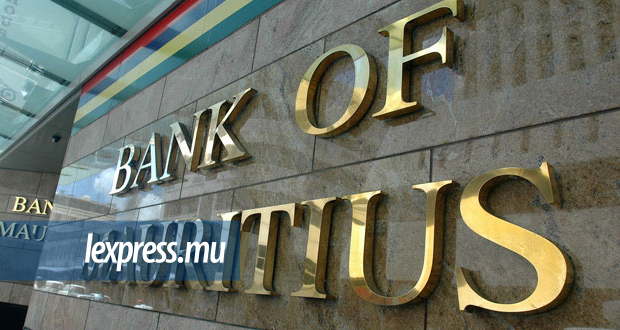Publicité
All Quiet on the External Front, until ….
Par
Partager cet article
All Quiet on the External Front, until ….

The Covid pandemic has wrought havoc on the country’s foreign exchange revenues, especially tourism receipts. However, despite the scarce availability of foreign exchange at local banks, the level of gross external reserves rose by USD 0.6bn between March 2020 and October 2021. A depreciation of the rupee exchange rate by over 10% contributed to the increase of Rs52 bn in reserves over this period.
This apparent improvement results from exceptional foreign financing (EFF) by Govt and the Bank of Mauritius (BoM) to boost the level of reserves, as well as from the sustained strength in offshore financial inflows of Global Business Companies (GBCs). Risks of financial instability however remain, with huge public debt, rising inflation, and pressure on global liquidity and interest rates as monetary policy tightens worldwide.
EFF
In support of fiscal needs and to supplement reserves since March 2020, EFF comprises (a) several loans taken by Govt from the African Development Bank (AfDB), the Agence Francaise de Development (AFD), the Japan International Cooperation Agency (JICA), (b) foreign investments in Govt securities, (c) an allocation of SDRs by the IMF, and (d) external borrowing by the Bank of Mauritius (BoM).
EFF between March 2020 and October 2021 add up to about USD 2bn, as shown below, representing around a quarter of our external reserves of USD7.7 bn at Oct 2021. As depicted in Chart 1, external reserves between Mar 20 and Sep 21 increased by USD 0.8 bn, but declined by about USD1 bn without EFF.


GBCs
GBC inflows have held pace in the second half of 2020 and the first half of 2021, as shown in Chart 2, despite widespread apprehensions following the FATF grey-listing of Mauritius in Feb 2020 on anti-money laundering and financing of terrorism issues and the subsequent EU blacklisting. The renewed impetus of GBC transactions probably reflects the expansion of existing business rather than new operations.
The current account deficit widened by over Rs25 bn to Rs54 bn in 2020, but is expected to worsen by only about Rs5 bn in 2021 with a recovery in investment and other income of GBCs. Net financial flows, excluding changes in foreign reserves, dropped sharply by Rs30 bn to Rs28 bn, on account of a major capital outflow from the domestic economy, but are projected to surge to a record level in 2021 with the continued expansion of GBC capital inflows.

BoP
The overall balance of payments (bop), as measured by the change in foreign reserves, recorded a surplus of Rs33 bn in 2019, reversed to a deficit of Rs21 bn in 2020, and is again expected to show a surplus in 2021, estimated at Rs20 bn. External reserves stood at Rs329 bn at end Oct 2021, or about Rs40 bn higher than at end Dec 2020.
The bop would run huge deficits without net GBC inflows, as shown in Chart 3. Excluding EFF and net GBC inflows, the bop deficit amounted to a record high of Rs112 bn in 2020, and is likely to improve only marginally in 2021.
A weakening in GBC financial flows due to external factors, such as a marked shift in global monetary easing, would build up pressure towards a sizeable bop deficit. Moreover, net financial outflows emanating from the domestic economy, as occurred in the second half of 2019 and of 2020, would further aggravate the gap in external payments.

Public Debt
Whereas external debt has been on the decline since 2015, the country is now increasingly dependent on foreign financing. Official Govt external debt started climbing as from March 2020, but has stabilized around Rs80 bn since March 2021. As shown in Chart 4, BoM has since emerged as a major external borrower by pledging and repoing its domestic securities. BoM liabilities to non-residents stood at Rs30.4 bn at end Oct 2021, compared to Rs0.4 bn in Mar 2020. BoM now represents about a quarter of total Govt external debt.
Govt’s official public debt statistics in September 2021 exclude BoM’s foreign loans of Rs26 bn, as well as an SDR allocation of Rs8 bn received from the IMF in August 2021. Govt has discontinued its previous practice of considering an IMF SDR allocation as a Govt liability. A consolidation adjustment, queried by the Director of Audit in a previous Audit Report, also artificially reduces Govt debt by Rs16 bn in Sept 2021.
After eliminating this fake consolidation item, Gross Public Sector Debt inclusive of the SDR allocation and BoM foreign loans would be higher by Rs50 bn, and represent 105% of GDP at Sept 2021, instead of the official figure of 94% of GDP.

Conclusion
The efforts to window-dress the external situation through more foreign borrowings are largely cosmetic. Foreign exchange remains scarce in spite of excess forex liquidity held at banks.The domestic onshore economy reflects a large balance of payments deficit, which is increasingly vulnerable to capital outflows. Even with a modest growth recovery, steeper price increases and an elevated debt burden are not conducive to an improved economic outlook.
Without a critical review of our monetary and fiscal policies, Moody’s might be led to downgrade the country’s sovereign credit rating, which could destabilize the financial sector. A lower rating that just clears investment grade status signals serious economic and financial risks ahead.
To avert these risks, Govt must effectively commit to a monetary strategy for countering inflation and to fiscal consolidation for steadying public debt. The explosive Covid health crisis should serve to remind us that it is better to be safe than sorry. Dial IMF for oxygen!
Publicité
Les plus récents






